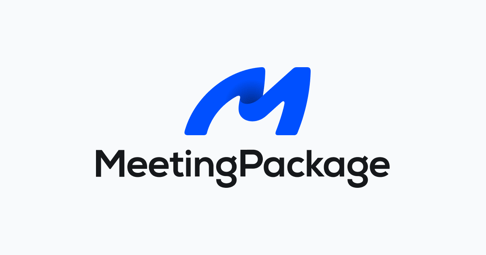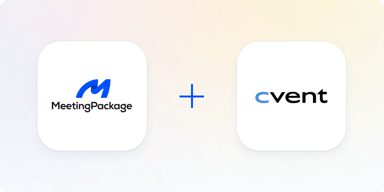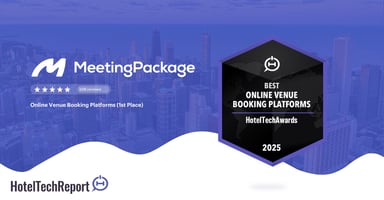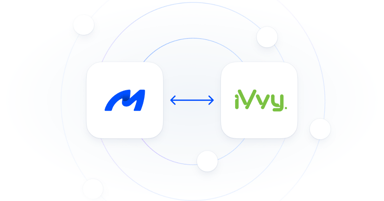

Joonas Ahola
We have a new brand! While the most noticeable change is our new logo and website, we have also made changes behind the scenes. This is an excellent opportunity to reflect on what we have done and what's ahead. As the CEO and Founder of MeetingPackage, I'm thrilled to shed some light on the whole process – with a bit of history.
Where it all started
I'll start by going a bit down memory lane. In the past, I managed venues that hosted hundreds of business and consumer events during 2006-2014. I got frustrated with the manual process and sub-par quality requests coming from the customers. In other words, I have been in your shoes.
Then, the idea of MeetingPackage was born.
In late 2016, MeetingPackage was launched to the global market as a marketplace. The foundation of MeetingPackage was born with the idea of making the selling and buying process of meetings and events as easy as flights, hotels and other travel.
We spent millions in search engine marketing only to face a cold fact: a marketplace would never fly without live access to availability. Mind you, customers were making requests worth tens of millions to venue partners, but due to being an additional extranet for the venue suppliers, the response time and quality did not match the customers' expectations. The slow response time from the suppliers resulted in cancelled or unanswered requests.
In hindsight, maybe with volume and time, we could have educated the suppliers and got them to improve their responses. Maybe. At the time, we couldn't find an investor to support a high-stakes bet with a high burn rate.
However, the high request volume convinced us that customers are looking for an easier way to book meetings and events online. We also believed that the industry would need to change shortly.
It was mid-2018, and it was time to pivot.
Building the Omni-Channel sales automation platform
We were the first company to build a direct integration with Opera Sales and Catering, the most used operational software in hotels to manage meetings and events sales and operations. The benefit was that hotels could continue working with their existing technology, all the while allowing end customers to see the real-time availability and pricing and, what is more, receive enquiries or definite bookings directly into their system. For us – and for the industry – this was a game-changing move.
Building integrations to legacy systems took much work. It took us roughly two years. As these legacy systems are built mainly for operational use, we needed to build a middle layer, a Venue Sales Management as we call it, to enrich the data with images, content, transparent pricing and more.
We are grateful to the brave early adopters and chains that trusted in our vision. The first integrated Opera hotel was Hotel Katajanokka from Prime Hotels. I'll never forget the amazement I could see on the faces of Markus Veikkolainen and Taru Ojaharju-Latief, the former staff at Hotel Katajanokka when the integration worked. It felt like we were onto something.
High growth and product suite evolution
Slowly, our product suite started to find its core value propositions. We began to achieve what is called in the startup world the product market fit. For those who are not familiar with our product, the product suite includes the following components:
- Venue Sales Management (VSM) allows hotels and venues to enhance their content, pricing and images. The software is also a standalone sales and catering tool for smaller properties.
- Booking Engine (BE) allows hotels and venues to sell meeting rooms online from direct channels with a branded end-to-end process to the customers.
- Channel Manager (CM) allows hotels and venues to manage their distribution strategy in one place without the need to maintain third-party extranets, commissions or ways of working
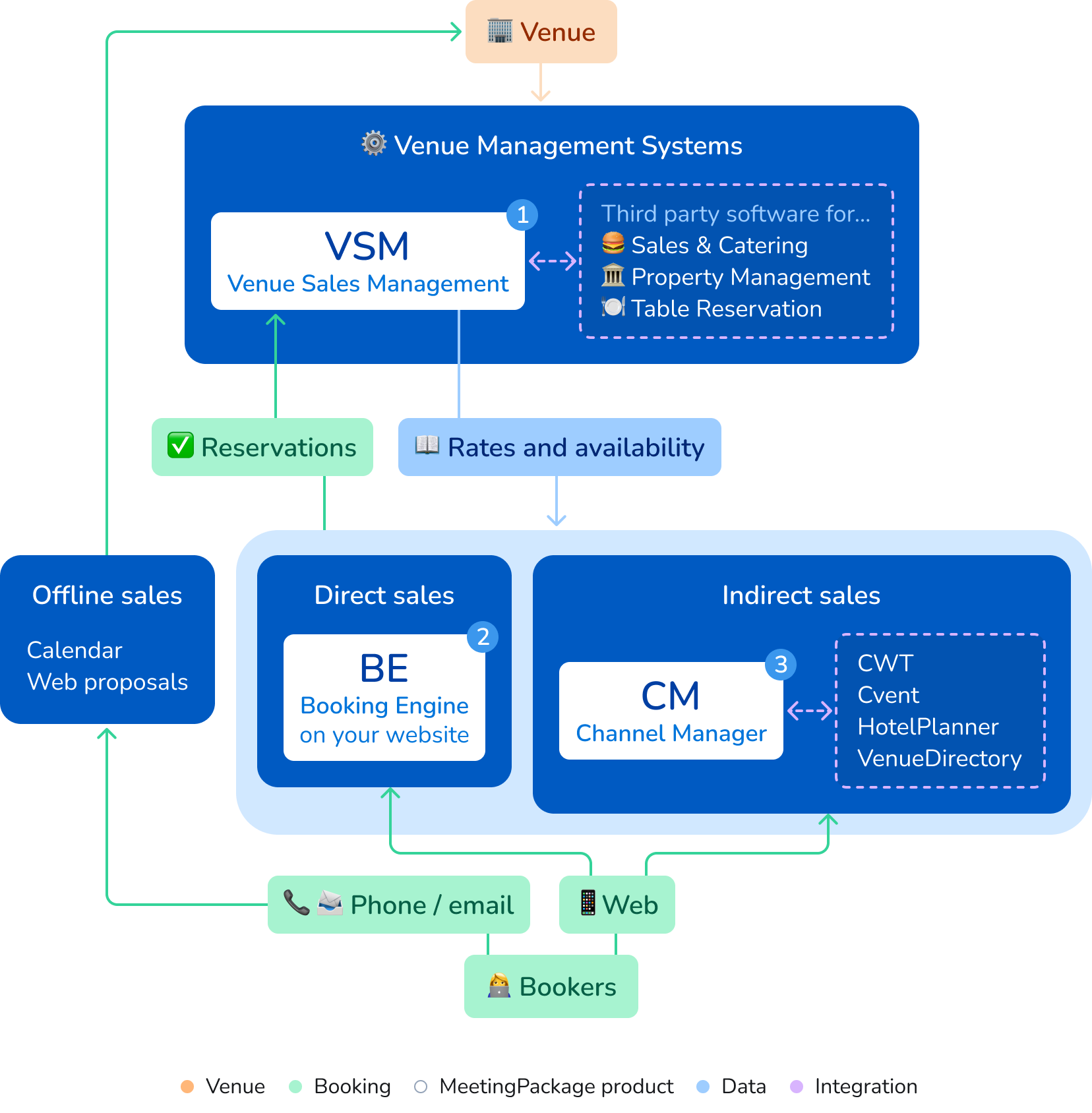
2020 and Covid-19
The pandemic hit our business like a storm. After days of tears, fear and endless nights of worry, we realised it was now or never. Whoever survives the pandemic will have a significant advantage in the market once it recovers.
Some companies started their pivots to focus more on virtual, hybrid and other events. We decided to focus on improving the core product and service offering and trusting that the industry will recover. I want to express my big thanks to our existing investors, who supported this vision and helped us through the pandemic.
This was one of the best decisions we have made as a company. During the pandemic, we had 0 % churn from our enterprise customers. Moreover, our partners have upscaled their MeetingPackage usage from the pre-pandemic levels.
Covid also worked in our favour, as the industry was forced to lay people off. Today, hotels and venues have fewer resources available than in pre-pandemic times. The need for small ad-hoc meeting rooms has increased as people work from home. You probably would want to avoid inviting customers or prospects to your home, wouldn't you?
The "why" of rebranding and fast-forward to today
Due to the long history and pivots, we realised that some stakeholders still see us as a marketplace. Or worse, have yet to learn what we provide to the industry. This was mainly because we focused on the application development and lacked attention to the overall brand, sales website and tone of voice. We needed a rebrand, kickstart and a full update on how we are seen outside.
You'll next hear more about the rebranding from our VP of design, Jussi Virtanen, who has been leading the rebranding project.
Rebranding from the ground up
When I joined MeetingPackage in early 2022, one of the things I immediately noticed was that we offer much more than what our visible brand suggests. After discussing this with the rest of the management team, we agreed that it was time to bring our brand to the same level as our offering.
From the start, we wanted to include the whole company in the process. We held a branding workshop and let everyone chime in with their visions of what we should look and feel like. As a follow-up, we shared an anonymous questionnaire for the team to fill in so everyone would be heard.
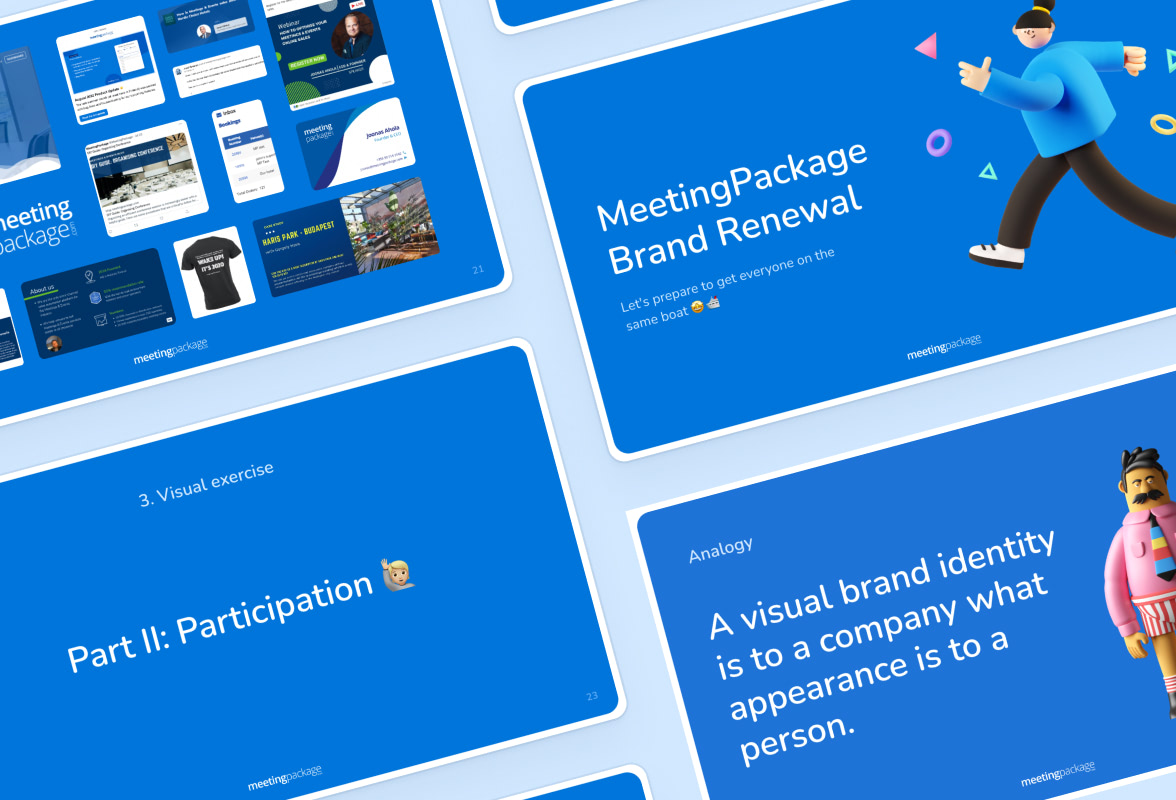
Based on this input, I moved into actual proposals of the visual brand and tone of voice. After some experiments, I created a proposal to present to the team. The proposal was an immediate hit, with around 90 % of people approving it. With some tweaks, we finally had a visual brand that we were proud to reveal today.
Although we now rock the new brand, the work has only started. We're constantly improving our communication and the quality of our product. Our new features undergo a new, more rigid review process before release. With our new, cutting-edge technology stack, we can build more robust solutions and convert our existing functionality.
We're thrilled about this change, and we hope so are you! Now, back to Joonas.
The last words
It's not anymore a question if this will fly, if the customers want to book online or if the solution works. Instead, it's time to supercharge our starship and grow exponentially as a company, product, team and individual.
